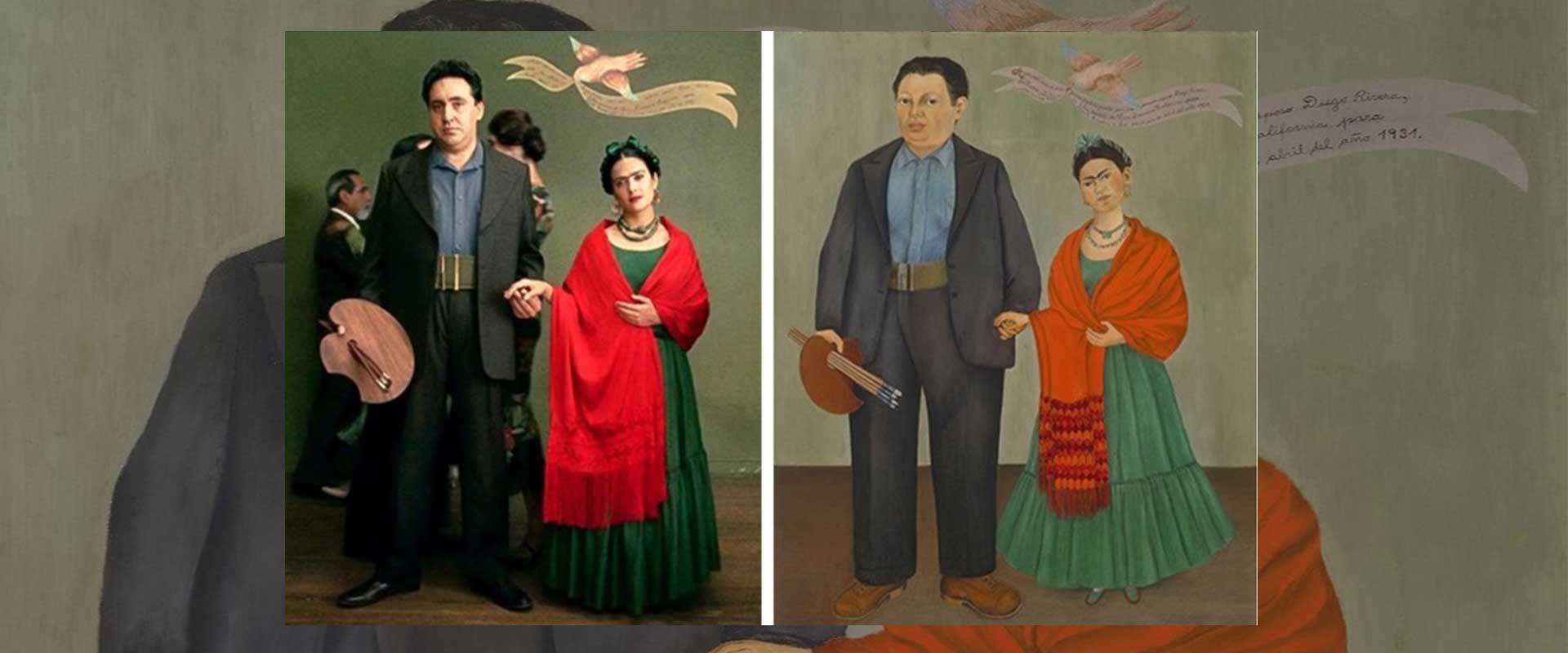Frida and Diego: A tumultuous love story in art and politics is one of the most fascinating and dramatic relationships in 20th-century cultural history. Frida Kahlo and Diego Rivera were two of Mexico’s most celebrated artists, bound together by passion, shared political beliefs, and a love for their country — yet torn apart by betrayal, distance, and differences in temperament. Their marriage was a stormy blend of artistic collaboration, political activism, and emotional volatility. Visitors to the Frida Kahlo Museum and admirers of Frida Kahlo wall art prints often find themselves equally captivated by the narrative of their love as by their artworks.
No products found.
How They Met
Frida Kahlo first encountered Diego Rivera as a teenager while he was painting a mural at her school, the National Preparatory School in Mexico City. Years later, after her bus accident and recovery, she sought out Rivera to critique her paintings. Rivera was impressed by her work and personality, and soon they began a relationship that would defy conventions and ignite the art world.
Marriage and the Fusion of Worlds
In 1929, Kahlo and Rivera married, despite opposition from her family. Rivera was 20 years older, a famous muralist, and already had a reputation for womanizing. Kahlo’s family reportedly referred to them as “the elephant and the dove,” a nod to their contrasting physical appearances and temperaments. Their union, however, represented more than a personal relationship; it was a merging of two powerful artistic visions deeply rooted in Mexican identity and leftist politics.
Key Differences and Shared Values in Frida and Diego’s Relationship
| Aspect | Frida Kahlo | Diego Rivera | Shared Connection |
|---|---|---|---|
| Artistic Style | Intimate, symbolic, personal | Monumental, public, political | Deeply Mexican themes |
| Personality | Fiery, introspective | Outgoing, dominating | Passion for art and politics |
| Political Views | Communist, nationalist | Communist, nationalist | Anti-fascist activism |
| Approach to Relationships | Passionate, loyal despite infidelities | Openly unfaithful | Mutual artistic respect |
| Artistic Medium | Easel painting, self-portraits | Murals, large-scale works | Shared influence on each other’s work |
Art as Love Letters and Battlegrounds
Their marriage often played out in their art. Kahlo’s paintings frequently addressed her relationship with Rivera, depicting both affection and betrayal. Works like Diego on My Mind show her devotion, while pieces like A Few Small Nips reflect pain and anger. Rivera, in turn, painted Kahlo into his murals, immortalizing her as both muse and comrade.
Political Partnership
Beyond their artistic connection, Frida and Diego were politically aligned. Both were members of the Mexican Communist Party, and their activism extended to their social circles. They famously offered refuge to Leon Trotsky when he fled Stalinist Russia, hosting him at Casa Azul. Their politics influenced their art, with Rivera’s murals celebrating workers and Kahlo’s paintings critiquing imperialism and social injustice.
Infidelities and Separations
Rivera’s affairs — including one with Frida’s sister Cristina — deeply wounded her. Kahlo also engaged in relationships with both men and women, some of which were public knowledge. In 1939, they divorced, only to remarry a year later under new terms. Their second marriage was just as complex, but they remained deeply connected until Frida’s death in 1954.
Love in the Midst of Pain
Kahlo’s declining health in her later years did not diminish Rivera’s presence in her life. Despite the betrayals and separations, he was by her side during her final days. Rivera later described losing Kahlo as the most tragic event of his life, acknowledging that their connection was unlike any other.
Influence on Each Other’s Art
Rivera encouraged Kahlo to embrace her unique style rather than emulate European traditions. She, in turn, brought emotional depth and symbolism to his political worldview. Their relationship became a fusion of the personal and the political, with art as both a shared language and a weapon in their disputes.
Cultural Impact of Their Love Story
Frida and Diego’s love story has inspired books, films, and exhibitions around the world. It serves as a testament to the idea that love can be both destructive and profoundly generative. Their home, Casa Azul, remains a pilgrimage site for admirers of their art and their story, offering insight into the space where their lives and work intertwined.
No products found.
Conclusion
Frida and Diego: a tumultuous love story in art and politics is a portrait of passion, contradiction, and mutual influence. Their marriage defied easy categorization, blending collaboration and competition, devotion and betrayal. Together, they left behind an artistic legacy that is inseparable from the politics and emotions that fueled it. Today, through exhibitions, biographies, and Frida Kahlo wall art prints, their intertwined lives continue to fascinate and inspire, proving that love — in all its complexity — can be as enduring as art itself.
FAQs About Frida and Diego’s Relationship
Were Frida and Diego equally famous during their lifetimes?
During their lifetimes, Rivera was more internationally recognized, but Kahlo’s fame grew significantly after her death.
Did their political beliefs influence their relationship?
Yes, their shared Communist ideals and activism were a central bond, though also a source of tension when their priorities diverged.
Why did they remarry after divorcing?
Despite conflicts, they remained emotionally and artistically intertwined, choosing to reunite under a revised understanding of their relationship.
How did their art reflect their relationship?
Kahlo’s paintings often conveyed personal emotions and conflicts, while Rivera’s murals sometimes included symbolic representations of her.
Can I see their shared living space today?
Yes, the Frida Kahlo Museum preserves Casa Azul, where many aspects of their shared life remain intact.





